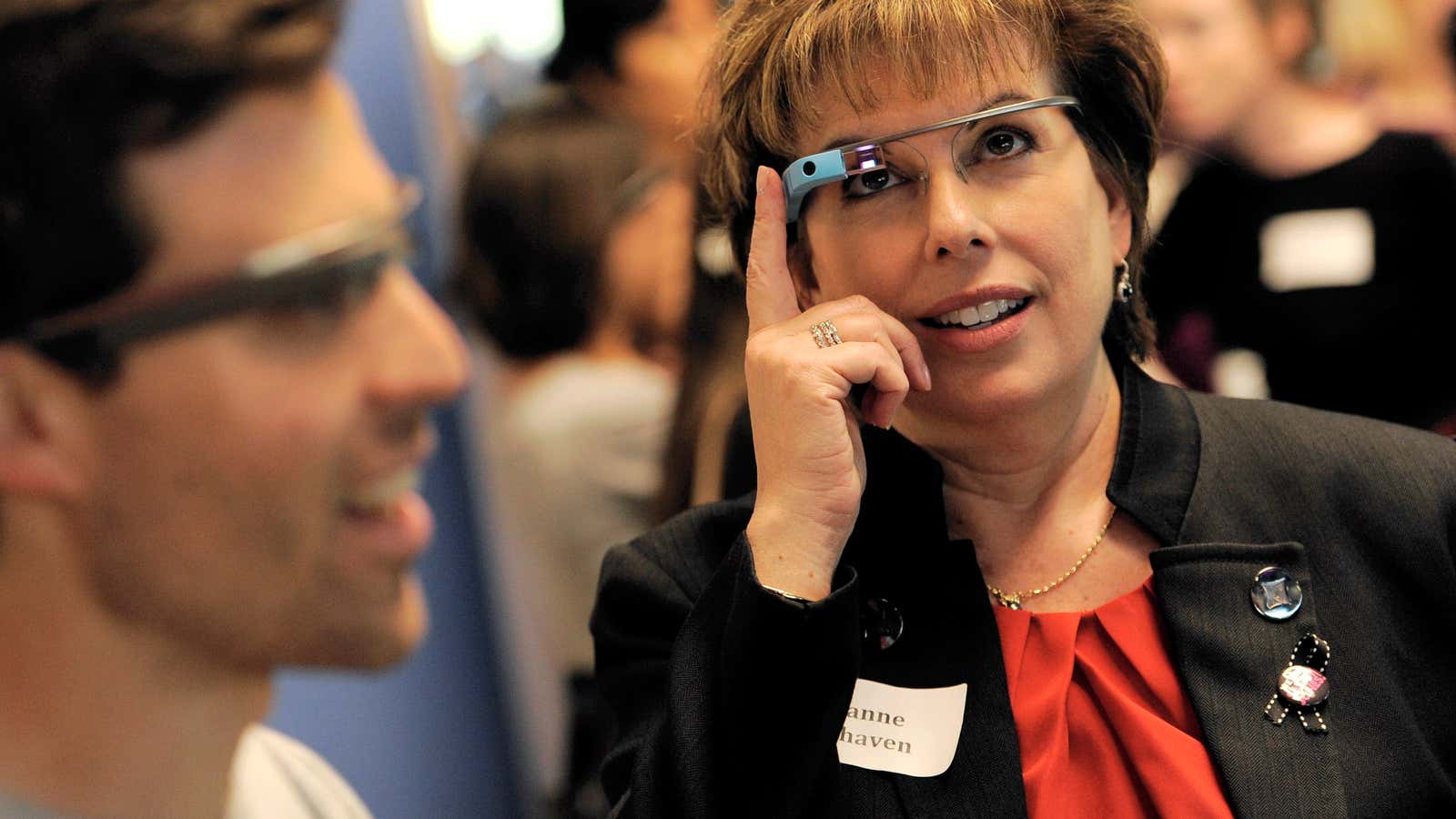Augmented reality headsets look universally dumb, and Google Glass is no exception. Luckily for Google, fashion sense goes out the window when it’s a matter of saving lives.
More than 30 surgeons around the world report that they’ve actually found Google Glass useful in the operating room and for patient care, according to an analysis of surgeons’ reviews of the device published March 6. The headset offers a hands-free experience and features a camera with live-streaming options, allowing surgeons to get information and send video for consultation without having to fiddle with equipment.
The review looked at 31 reports spanning from 2013 to 2017, 25 of which covered cases of actual patient care while 6 were simulations.
The Glass headsets weren’t just used in low-stakes situations— surgeons used them during used heart, brain, and eye surgeries. The most common use was education, where the surgeon could be monitored via livestream and instructed on how to proceed. That video is also used for training purposes outside the operating theater. Aside from being used to show vital signs, one of the studies described the Glass headset being used to make Google searches. However, doctors found complicated medical searches to only work half the time, and when it did, the information was often pulled from Wikipedia.
There were also drawbacks: Google Glass doesn’t have medical applications installed on it, which means data privacy can be a problem. The doctors also had many of the same concerns a consumer reviewer would have: They’d like to see longer battery life, a better camera, more processing speed, and better wireless connectivity.
